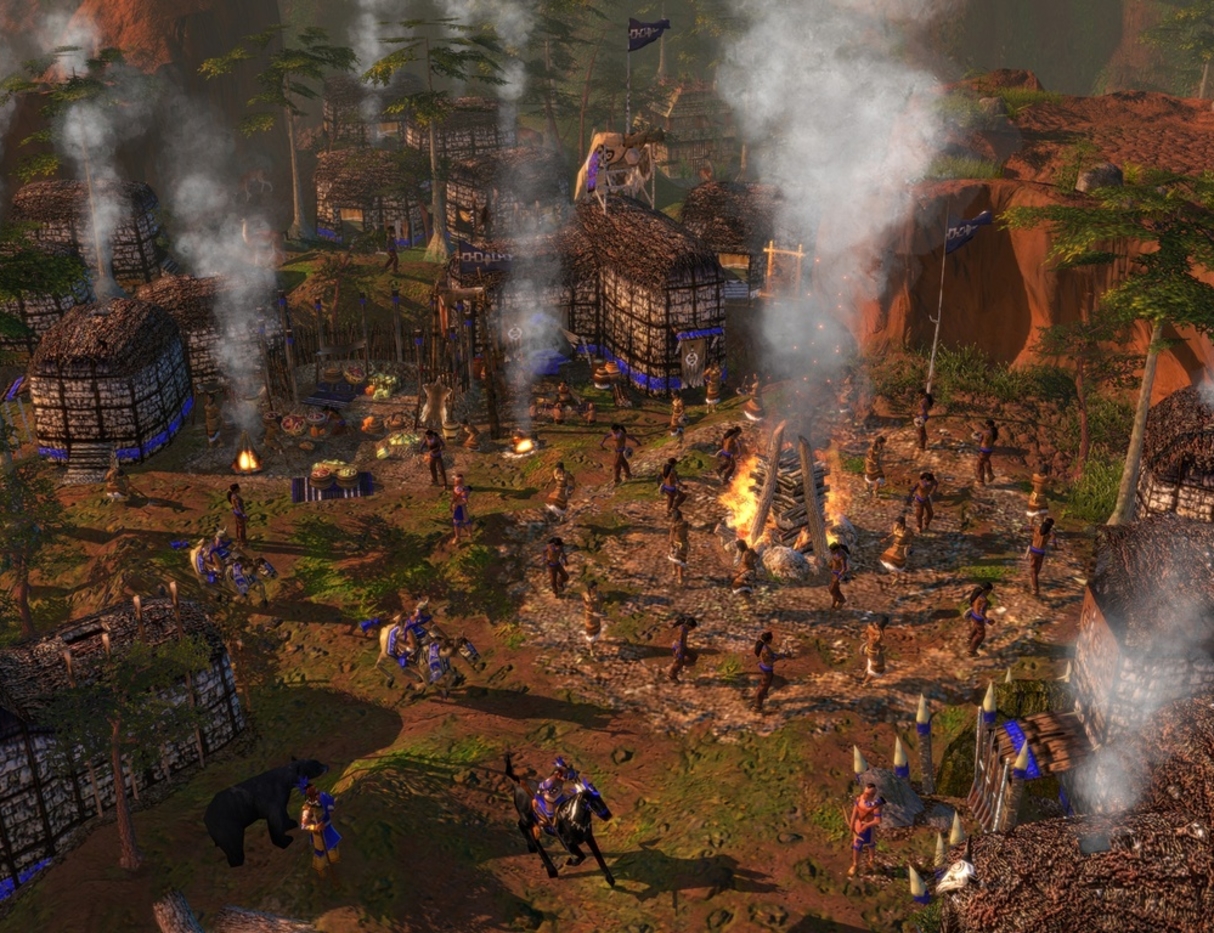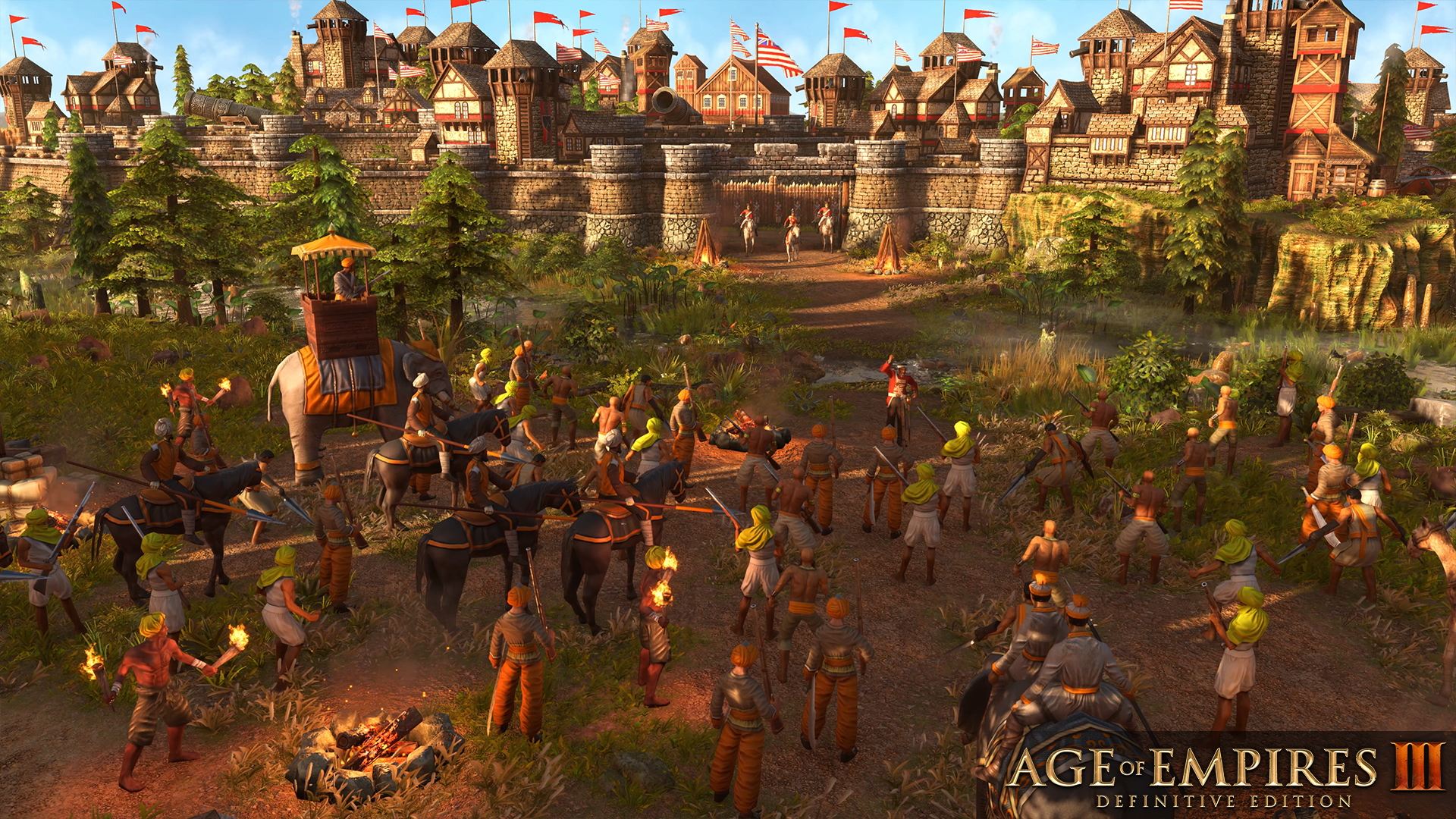

Axe Rider: Mounted warrior good against skirmishers, foot archers, and artillery. Wakina Rifle: Light infantry with low hitpoints, but a long-ranged attack. Club Warrior: Foot warrior armed with a deadly club. Warrior: Quick-training Native defender who quickly loses hitpoints, becoming less effective over time. Villager: Villager that gathers resources. Explores, fights, builds Town Centers and Trading Posts. Possesses many powerful bonuses and abilities. Unique units Lakota War Chief: The leader of your Tribe. Choose Tribal Council members to advance in Age.

Build the Community Plaza and task Villagers on it to perform powerful ceremonies.Cannot gather coin by mining build a Tribal Marketplace next to a mine and assign Villagers on it to gather coin from the mine instead.Starts with all Trading Post sites visible.War Chief aura increases the speed of nearby friendly units.Always have population cap at maximum, but can only build walls from the Industrial Age.

Buildings can be destroyed by the use of the Fire Ceremony or any cavalry with high siege damage. Cavalry can be destroyed with Bow Riders and Rifle Riders, and artillery can be countered with any unit. Heavy infantry can be beaten with Tokala Soldiers and Rifle Riders. Ranged infantry can be countered by Axe Riders, Tokala Soldiers, and Tashunke Prowlers. Their armies consist of mostly cavalry, as their infantry are mediocre and do not possess artillery, but the armies are quite balanced, too. Their houses are replaced by Teepees, which, instead of increasing population, increase hitpoint and attack of nearby units. One of the most unique and important abilities of Lakota is that they do not need to build houses they already have 200 population cap from the very beginning of the game. They have the strongest cavalry units of all of the Native American civilizations, but only mediocre infantry. More studios are now turning to cultural consultants when including Indigenous people in their games, though Brave also recommends curious players to check out wholly Indigenous-made games such as When Rivers Were Trails, Thunderbird Strike, Umurangi Generation, Terra Nova, and Never Alone.The Lakota armies are mainly composed of Cavalry units.
#Aoe 3 warchiefs nature friendship ability full#
World's Edge also removed the Nature Friendship ability, which is based on a trope that Brave says "seems particularly prevalent in video games to the point where it seems like if there is a Native character in a video game, that character must have animal powers."īrave also rewrote the Shadow plotline, which he talks about in detail in the full interview on World's Edge's website. The Fire Pit will now be replaced by the Community Plaza, a building where villagers can work together to create upgrades for the civilization. This perpetuates the old, tired 'savage vs civilized' dichotomy." "On the other hand, the Western people get power through logical means: like the development of technology or increasing their capacity for war by developing their forts. "The Fire Pit works magically in that having people dance around a fire somehow gives warriors on the battlefield more power," Brave explains. The Fire Pit was another feature that needed to be completely re-worked, according to Brave. In response to Brave's feedback, mining has been swapped out for those civilizations for a Tribal Marketplace, giving First Nations civilizations an alternative way to gather Coin. The mining was just nonsensical for Native people, too." "For example, the Fire Pit is pretty bad-not to mention the skulls on spikes at, like, all Indigenous villages in the main game. "To be honest: there were times playing as a Lakota guy that felt pretty cringey," Brave says of the original game. "So we have changed those civ names in the DE to their Indigenous names-Lakota (Sioux) and Haudenosaunee (Iroquois)." "Before we started working on the DE with our Native American and First Nations consultants, we didn’t know that the names Sioux and Iroquois were given to them by European settlers," developer World's Edge explained. The changes made for the Definitive Edition extend to the very names of the First Nations civilizations, but also involve changes to how they play and progress through the game, as well as a full re-write of the Shadow storyline. Now Playing: Age of Empires III: Definitive Trailer | Gamescom 2020 By clicking 'enter', you agree to GameSpot's


 0 kommentar(er)
0 kommentar(er)
